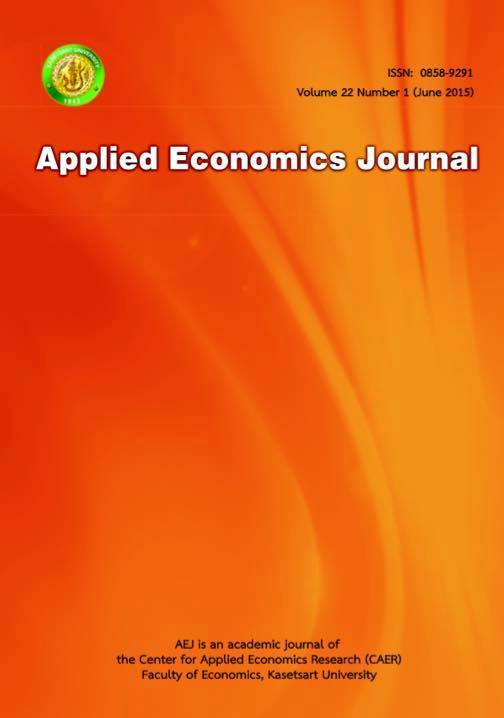Exploring long-run relationship and error correction of Thai output and price
Main Article Content
Abstract
As the Thai economy has integrated into the world system, it increasingly endures not
only internal circumstances, but also external turmoils. Stabilizing the country’s growth
and inflation from macroeconomic shocks has then become a challenge to policymakers.
This study thus concentrates on investigating the long-run relationship and the adjustment
process towards the equilibrium of output and price of Thailand from 2001 to 2014. For
this purpose, the dynamic relationship, cointegration property, and error correction term
are explored by DOLS, various cointegration tests, and ECM. The cointegration test also
remarks the possibility of monetary policymakers to surprise the market in order to expect
the increase in output. It also reconfirms that the interest rate tends to be a passive
monetary instrument in curbing inflationary. Moreover, the adjustment process to the long-run
of both output and price is found to have a symmetric cointegration property which implies
the systematic ECM. The symmetric error correction test presents the significantly negative
elimination in the next quarter towards long term equilibrium. The monetary policymakers
thus seem to react to the rise in inflation uncertainty by keeping down inflation. Meanwhile,
the output level tends to have faster adjustment speed than that of the price level.
Article Details
The paper is published under CC BY-NC-ND, in which the article is freely downloaded and shared in its original form non-commercially and its citation details are identified.


